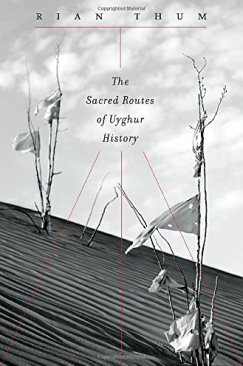In an adaptation from his book The Sacred Routes of Uyghur History at The Los Angeles Review of Books, Loyola University New Orleans’ Rian Thum examines the emergence of modern Uyghur identity in and around Xinjiang:
[…] Although the word Uyghur, a name associated with certain pre-Islamic Altishahri kingdoms, had maintained an ephemeral presence in Altishahr all the way into the 20th century, it was not an ethnonym in wide use, and when it was used, it tended to be restricted to subgroups of inhabitants around the northern oases of Turpan and Qumul. The resurrection of the term as an ethnonym seems to have been influenced by European scholarship on the Uyghur Buddhist kingdoms, scholarship that was becoming available to intellectuals in Western Turkestan. In 1910 a Taranchi author published under the pen name Child of the Uyghur (Uyghur Ballisi). By the 1920s, political and cultural organizations were using Uyghur as an ethnonym, and debating whether it should include Kashgaris (Altishahris exclusive of Taranchis) only, Kashgaris and Taranchis, or perhaps even all of the ethnic groups of Xinjiang, including Han. In 1935 Sheng Shicai [the “warlord-governor” who ruled Xinjiang from 1933-44] enshrined the Uyghur category, essentially as it had developed among the Yettisu Taranchis, as an official ethnic category. […]
[…] By 1985 the Uyghur ethnonym was widely accepted by Altishahris. In that year, Justin Rudelson conducted a survey of 81 Turpan residents, in which all but five respondents ranked Uyghur among their three most salient identities (other choices being Muslim, Turpanliq, Junggoluq, and Turk). However, the long journey from the situation that pertained in 1934 to the wide use of the ethnonym Uyghur in 1985 remains largely hidden. While scholars have paid plenty of attention to the development of elite Uyghur nationalist discourse and state ethnic policies, the process by which acceptance of the new (though presented as old) Uyghur identity spread among the ordinary Altishahri population has never been carefully studied, due mostly to a dire lack of accessible sources on the subject. Much of the spread of the Uyghur idea must have taken place during the first three decades of Chinese Communist rule (i.e., 1949–1979) a period for which we have only scant and little-studied sources. [Source]








